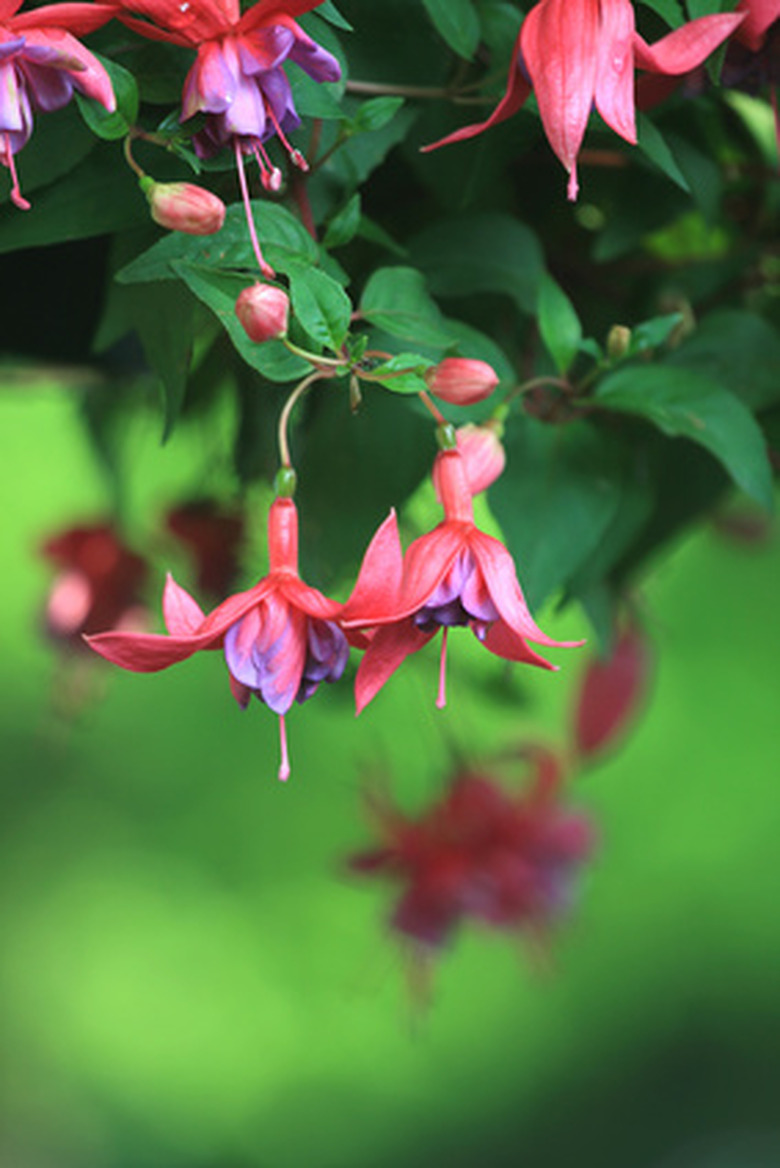How To Care For Trailing Fuchsia Plants
Things Needed
- Pot or hanging container
- Commercial potting mixture
- All-purpose granular fertilizer
- Compost
- All-purpose water-soluble fertilizer
- Spray mister
Tip
When purchasing trailing fuchsia, choose healthy, green plants with no evidence of brown or black spots.
Trailing fuchsia is an elegant plant with colorful, delicate blooms that will cascade gracefully over the edges of a hanging basket or patio container. Trailing fuchsia prefers cool summer climates, and won't do well in extreme heat or in hot afternoon sunlight. Be sure to use a container with good bottom drainage to prevent the roots from becoming too wet.
Step 1
Fill a pot or hanging container with commercial potting mixture, and mix in a handful of all-purpose granular fertilizer and 1 cup of compost.
Step 2
Plant the trailing fuchsia deeply in the soil, up to half the height of the plant. This will allow the plant to grow sturdier roots. Water the plant well after it's planted.
Step 3
Water trailing fuchsias when the top of the soil is dry to the touch. Cut back on watering in autumn to prepare the fuchsia for winter.
Step 4
Feed trailing fuchsias an all-purpose, water-soluble fertilizer every two to four weeks during the growing season. Stop fertilizing the plant in autumn, about a month before the first frost of the season. New growth will make the plant more susceptible to winter cold.
Step 5
Remove faded blooms to prevent the plant's energy being diverted into seed production. To create a bushier shape, pinch off each shoot at the third set of leaves up from soil level. When those shoots develop new shoots, pinch them off at the third set of leaves, and repeat one more time. After about six weeks, the trailing fuchsia will be bushy and full.
Step 6
Cut trailing fuchsias down to 6-inch stubs, and bring them indoors before the first frost. A garage or shed is fine, as long as the temperature will be above 40 degrees Fahrenheit.The plant will be dormant, and won't need light until you bring it out in spring, but the soil needs to be kept slightly moist because the fuchsia will die if gets too dry. An occasional misting is also beneficial during the winter.
Step 7
Repot the trailing fuchsia when you bring it out in warm weather. You can use the same pot, but fill it with fresh potting soil, along with a handful of all-purpose fertilizer and 1 cup of compost.
